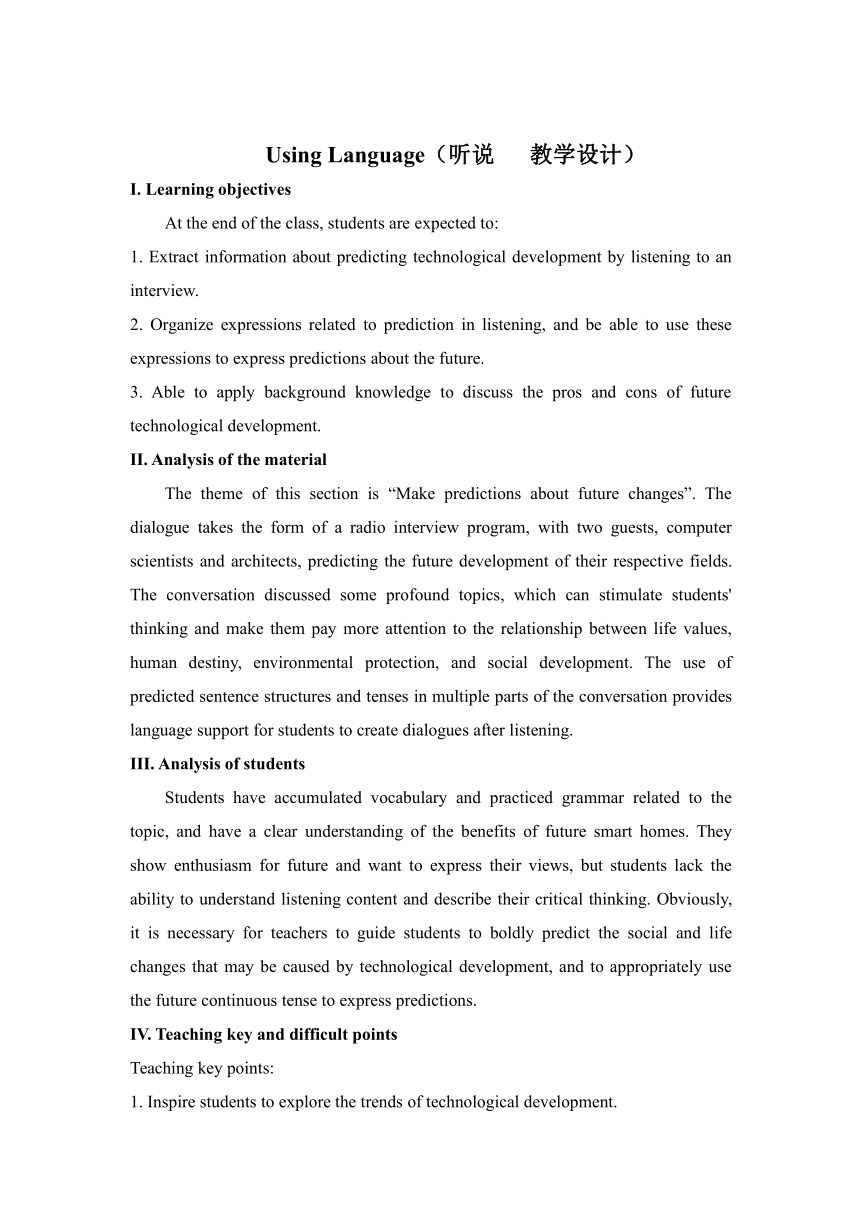
Using Language(听说教学设计) I. Learning objectives At the end of the class, students are expected to: 1. Extract information about predicting technological development by listening to an interview. 2. Organize expressions related to prediction in listening, and be able to use these expressions to express predictions about the future. 3. Able to apply background knowledge to discuss the pros and cons of future technological development. II. Analysis of the material The theme of this section is “Make predictions about future changes”. The dialogue takes the form of a radio interview program, with two guests, computer scientists and architects, predicting the future development of their respective fields. The conversation discussed some profound topics, which can stimulate students' thinking and make them pay more attention to the relationship between life values, human destiny, environmental protection, and social development. The use of predicted sentence structures and tenses in multiple parts of the conversation provides language support for students to create dialogues after listening. III. Analysis of students Students have accumulated vocabulary and practiced grammar related to the topic, and have a clear understanding of the benefits of future smart homes. They show enthusiasm for future and want to express their views, but students lack the ability to understand listening content and describe their critical thinking. Obviously, it is necessary for teachers to guide students to boldly predict the social and life changes that may be caused by technological development, and to appropriately use the future continuous tense to express predictions. IV. Teaching key and difficult points Teaching key points: 1. Inspire students to explore the trends of technological development. 2. Use predictive expressions to express predictions about the future. Teaching difficult point: How to properly use predictive expressions to express predictions about the future. V. Teaching Procedure 教学目标 教学活动及互动方式 设计 意图 活动 层次 效果评价 通过图片激活学生背景知识,熟悉话题词汇。 Step 1: Lead-in Match the words with the pictures. 互动方式:学生描述图片内容,将图片和词汇相匹配。 通过图片对话题进行预热,学生把事件和图片连线,激活相关背景知识。 感知与注意 学生能够通过观察和描述图片进行预测,将图片与词汇进行匹配,激活相关背景知识,并熟悉听力中的部分话题词汇。 启发学生进行批判性思考,为即将开始的听力做准备。 Step 2: Before listening Discuss the opportunities and challenges of new technologies. Challenges: With the development of computer technology, more users’ information are stolen. More people are out of work because of automation. Cloning may result in disorder. The Polar bears and other animals will lost their home because of the melt ice caused by global warming. Opportunities: More information is available to users owing to the development of computer technology. People can free themselves to enjoy life because of automation. Cloning may cure mor ... ...
~~ 您好,已阅读到文档的结尾了 ~~

